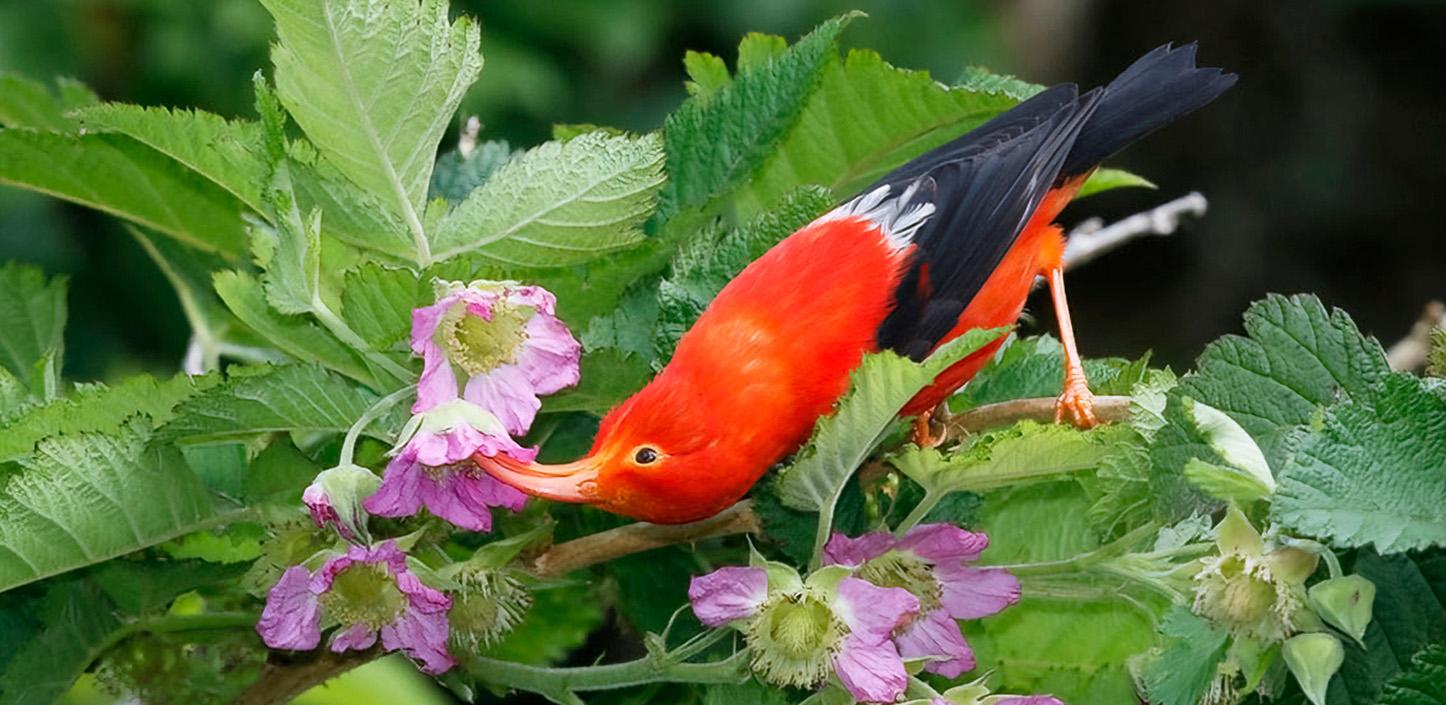
Located in the central north Pacific Ocean and spanning 1,523 miles, the Hawaiian Archipelago consists of eight major and 124 minor islands. Due to its remote geography, Hawai‘i’s unique natural environment evolved in isolation. Hawai‘i has the world’s highest percentage of endemic species—90 percent of terrestrial and more than 25 percent of marine species are found nowhere else on Earth. In fact, every native forest bird species can only be found in Hawai‘i. Many of these birds are stunning in terms of beauty and sound; more than 55 species of honeycreeper originated from a founding group of Eurasian rosefinches such as the now extinct Kaua‘i ‘akialoa, for which half of its length was accounted for by its long sickle-shaped bill.
Unfortunately, native ecosystems and biodiversity are under threat. Of the more than 10,000 native Hawaiian flora and fauna species, most are ill equipped to survive the challenges presented by a range of intentional and accidental introductions of species and diseases, a changing climate and increased development. The State of Hawai‘i now has more than 40 percent of the nation’s federally listed threatened and endangered species, even though the state comprises only less than 1 percent of the land area. Furthermore, many species not federally listed are either in decline or little is known about their population status.
Conservation Needs & Strategies
NFWF’s Hawaiʻi Conservation Business Plan is designed to strategically protect and enhance essential habitats in Hawai‘i to reduce extinction risk and sustain resilient populations of native species. Building on NFWF’s past experience and investments in this landscape, this plan outlines goals for watershed forest health, endemic birds and coral reefs that it aims to achieve over the next 10 years.
NFWF will fund projects implementing the following strategies to support the overarching goal of reducing extinction risk and sustaining resilient populations of native species in Hawaiʻi.

Hawai‘i Conservation Program
The National Fish and Wildlife Fund’s Hawai‘i Conservation Program aims to strategically protect and enhance essential habitats in Hawai‘i, from mauka to makai (from the mountains to the ocean), to reduce extinction risk and sustain resilient populations of native species.
Learn More